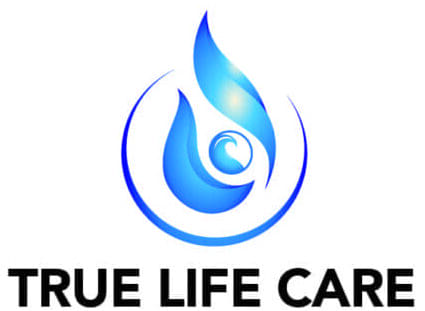Art Therapy vs. EMDR: Finding the Treatment That’s Right For You
Learn more about art therapy vs. EMDR, their benefits, and how to decide which treatment is right for you. Please contact our admission office for more informations about our art therapy and EMDR program treatment in New Jersey.

Introduction
Navigating the world of mental health treatments can be a daunting task. Many options are available to those seeking relief from life’s emotional challenges. Two such treatments are art therapy and eye movement desensitization and reprocessing (EMDR).
Here, we will review art therapy vs. EMDR. These treatments have garnered attention in recent years for their unique approaches and effectiveness in addressing psychological issues.
We will see their definition, benefits, and possible drawbacks. We will also see how they can possibly synergize to give the best mental healthcare.
Art Therapy Overview
Art therapy uses various forms of art to help individuals express and process their emotions. The focus is on the creative process rather than the end product.
The art therapist guides the individual through the process of creating art to explore their feelings and gain insight into their experiences.1
EMDR Overview
EMDR, on the other hand, is a psychotherapy approach that focuses on processing traumatic or distressing memories. EMDR uses eye movements, sounds, or taps to stimulate both sides of the brain.
Art Therapy vs. EMDR
The key differences between art therapy vs. EMDR lie in their goals and methods. Art therapy is primarily focused on the following:
- Self-expression
- Exploration
- Insight-building
Meanwhile, EMDR focuses on processing traumatic memories and reducing associated symptoms. Art therapy uses the creative process to express emotions and gain insight. In contrast, EMDR utilizes specific techniques to reprocess traumatic memories.
Which Option is Better?
Both art therapy and EMDR can be effective therapeutic approaches. It depends on the individual’s needs and circumstances.
Art therapy may benefit individuals who struggle with expressing their emotions verbally. It works for those who benefit from a more creative approach to therapy.
Different Focuses
While art therapy vs. EMDR is both therapeutic approaches, their goals and methods differ. Art therapy focuses on creative expression and insight-building.
Meanwhile, EMDR focuses on processing traumatic memories and reducing associated symptoms.
What Types of Mental Health Conditions can be Treated with Art Therapy? How Do They Differ from the Conditions that can be Treated with EMDR?
- Anxiety
- Depression
- Post-traumatic stress disorder (PTSD)
- Eating disorders
- Addiction
Who Can Art Therapy Benefit?
Art therapy can benefit individuals who have difficulty expressing their emotions verbally. It also benefits those who want a more creative approach to therapy.
The creative process of art-making can help individuals explore and express their emotions in a safe and non-judgmental space. This leads to increased self-awareness, self-esteem, and coping skills.
What Does EMDR Treat?
EMDR, on the other hand, is primarily used to treat conditions related to trauma. It treats:
- PTSD
- Acute stress disorder
- Phobias
What Does EMDR Do?
EMDR is a structured approach that focuses on processing traumatic memories. It also reduces associated symptoms, such as:
- Flashbacks
- Nightmares
- Anxiety
The goal of EMDR is to help individuals reprocess traumatic memories so they are no longer distressed – which in turn promotes healing and growth.
Different Approaches, Different Goals
Both art therapy vs. EMDR is effective in treating mental health conditions. Still, they differ in their approaches and goals.
Art therapy is a more creative and exploratory approach. This makes it suited to treat a variety of mental health conditions.
EMDR is specifically designed to treat conditions related to trauma. The choice between art therapy and EMDR depends on the individual’s needs. Working with a qualified mental health professional to determine the best approach for each individual is essential.
How Does Creativity Play a Role in Art Therapy? What Role Does Eye Movement Play in EMDR?
Creativity is a fundamental aspect of art therapy. The process of creating art can help individuals express themselves in a nonverbal way. They can explore their thoughts and emotions and develop coping strategies.
In art therapy, the focus isn’t just on creating a perfect piece of art. It is about using the creative process for self-expression, self-discovery, and healing.
EMDR and Eye Movement
Eye movement plays a crucial role in EMDR. During an EMDR session, the therapist guides the individual through a series of rapid eye movements. At the same time, they recall a traumatic memory or negative belief.
Mechanism of Action in EMDR
While the exact mechanism of action is not fully understood, eye movements are believed to activate the brain’s natural healing mechanisms.
They facilitate the integration of the traumatic memory into a larger context. They also reduce the distress associated with memory.
In summary, creativity is central to art therapy, while eye movement is central to EMDR. Both approaches can be effective in promoting healing and growth.
How are Art Therapy and EMDR Used Together to Treat Mental Health Conditions? What are the Potential Benefits of Combining the Two Approaches?
Art therapy vs. EMDR is both a practical therapeutic approach. They can help individuals process and manage traumatic experiences and other mental health conditions.
Art Therapy as a Precursor to EMDR
Art therapy may sometimes be used as a preparation or support technique for EMDR. For example, art therapy may help individuals develop a greater sense of safety and comfort with expressing difficult emotions. They do this before beginning EMDR.
Art therapy may also be used as a tool for self-regulation during EMDR sessions. It helps individuals manage distressing emotions that may arise during the treatment.
Benefits of Combining Therapies
Combining art therapy vs. EMDR can offer several potential benefits. For example, the creative process of art therapy can help individuals feel more grounded and present in their bodies. This makes it easier to engage with the eye movement aspect of EMDR.
Combining the two approaches can also provide a more varied and multi-sensory approach to treatment. It engages different brain parts and helps individuals process experiences from multiple angles.
Tailored Treatment
Another potential benefit of combining art therapy vs. EMDR is that both approaches can be tailored to the client’s individual needs. Art therapy can be adapted to focus on specific themes or issues.
Meanwhile, EMDR can target specific traumatic memories or negative beliefs.
How Does the Therapeutic Relationship Between the Therapist and Client Differ in Art Therapy vs. EMDR?
The therapeutic relationship between the therapist and client in art therapy vs. EMDR differs in some ways.
Encouragement in Art Therapy
In art therapy, the therapist typically encourages clients to explore and express their feelings through various art.
The therapist may provide guidance and support as the client creates their artwork. Then, they help the client process the emotions and insights from the experience.
Guidance in EMDR
In EMDR, the therapist typically guides the client through a specific protocol. This protocol involves recalling a traumatic memory or disturbing event.
At the same time, they engage in rapid eye movements or other forms of bilateral stimulation. The therapist may also provide support and guidance as the client processes the memories and associated emotions.
Art therapy vs. EMDR requires a solid therapeutic relationship built on trust, empathy, and safety. However, the focus and approach of each modality may differ. It depends on the client’s needs and the therapy’s specific goals.
What Should Someone Expect During an Art Therapy Session? How Does It Differ from an EMDR Session?
There are differences between art therapy vs. EMDR sessions. These differences will be detailed below.
What to Expect from Art Therapy Sessions
During an art therapy session, a person can expect to engage in creative expression through various art materials and techniques. The therapist may provide guidance and support as the client creates their artwork
Then, they help the client process the emotions and insights that arise from the experience. Art therapy focuses on using the creative process as a means of self-exploration, healing, and growth.
What to Expect from EMDR Sessions
In contrast, during an EMDR session, a person can expect to engage in a specific protocol designed to help them process traumatic or distressing experiences.
The therapist guides the client through recalling a traumatic memory or disturbing event while engaging in rapid eye movements or other forms of bilateral stimulation. The goal of EMDR is to reprocess and integrate the memory in a way that reduces its emotional impact and promotes healing.
While art therapy vs. EMDR may involve a solid therapeutic relationship built on trust, empathy, and safety, the focus and approach of each modality differ.
How can Someone Choose Between Art Therapy vs. EMDR as a Therapeutic Approach?
Choosing between art therapy vs. EMDR as a therapeutic approach can be a complex decision. Both modalities have unique benefits and considerations.
Here are some factors that someone may want to consider when deciding on art therapy vs. EMDR.
Type of Mental Health Condition
Art therapy is a broad modality that can be helpful for a wide range of mental health conditions. It may include anxiety, depression, trauma, and grief.
EMDR, on the other hand, is specifically designed to treat trauma and post-traumatic stress disorder (PTSD). If a person’s primary concern is trauma-related, EMDR may be the more appropriate choice.
However, art therapy may be a more versatile option if a person is dealing with various mental health challenges.
Personal Preferences and Comfort Level
It’s essential to consider which approach between art therapy and EMDR feels most comfortable and accessible to the individual.
Some people may feel more at ease with art therapy’s creative expression and open-ended nature. Others may prefer the structured protocol and focus of EMDR.
Goals for Therapy
Art therapy vs. EMDR have different goals and outcomes. Art therapy is focused on using the creative process to explore emotions, gain insight, and promote healing and growth.
EMDR is specifically designed to reprocess traumatic memories to reduce the emotional impact and promote healing. Considering the individual’s therapy goals and the best approach is essential.
Availability of Trained Professionals
It’s important to consider whether trained professionals are available in the individual’s area who specialize in art therapy vs. EMDR.
While both modalities are becoming more widely recognized and available, finding a therapist specializing in one approach may be more accessible.
Safety Concerns
While art therapy vs. EMDR is generally safe and effective, it’s essential to consider any individual safety concerns or risk factors that may impact the choice of modality.
For example, EMDR may not be appropriate for individuals with certain medical conditions or those currently experiencing high levels of distress.
Ultimately, the decision between art therapy vs. EMDR should be made in consultation with a mental health professional. They can help guide the decision-making process and provide expert guidance and support.

How Can True Life Care Help with Art Therapy vs. EMDR?
As a mental health service provider, True Life Care can help individuals decide between art therapy vs. EMDR by conducting an assessment and discussing the client’s specific needs and goals for therapy.
Our Team
Our trained and licensed mental health professionals can explain the differences between the two approaches. Then, they help individuals make informed decisions based on their needs and circumstances.
Art Therapy at True Life Care
For individuals interested in exploring art therapy, True Life Care offers art therapy sessions tailored to the client’s specific needs and circumstances.
Our therapists work with clients to identify goals for therapy and develop personalized treatment plans that incorporate various art therapy techniques, such as drawing, painting, and sculpting.
EMDR at True Life Care
For those who are interested in EMDR, True Life Care provides EMDR therapy that is specifically designed to help individuals process and heal from traumatic experiences.
Our therapists use a structured approach to EMDR that involves identifying specific traumatic memories and using bilateral stimulation, such as eye movements, to help clients reprocess those memories in a safe and controlled environment.
EMDR at True Life Contact True Life Care Today
Ultimately, the decision between art therapy and EMDR will depend on various factors. At True Life Care, our mental health professionals work closely with clients to identify their unique needs and develop a personalized treatment plan that meets those needs.
Reach out to us today for more information about our art therapy and EMDR program treatment in New Jersey.
Resources
- https://pubmed.ncbi.nlm.nih.gov/31747178/
- https://pubmed.ncbi.nlm.nih.gov/29928250/
- https://www.tandfonline.com/doi/abs/10.1080/17454832.2021.1906288?journalCode=rart20
- https://pubmed.ncbi.nlm.nih.gov/34456801/
- https://pubmed.ncbi.nlm.nih.gov/30111254/
- https://pubmed.ncbi.nlm.nih.gov/29018388/
- https://www.tandfonline.com/doi/abs/10.1080/17454832.2021.1906288?journalCode=rart20



